
Syllabus shared by a UNC System faculty member.
- Subject:
- U.S. History
- Material Type:
- Syllabus
- Author:
- UNC System
- Date Added:
- 06/18/2024

Syllabus shared by a UNC System faculty member.

Syllabus shared by a UNC System faculty member.

Syllabus shared by a UNC System faculty member.

Syllabus shared by a UNC System faculty member.

Syllabus shared by a UNC System faculty member.

Syllabus shared by a UNC System faculty member.

Syllabus shared by a UNC System faculty member.

Syllabus shared by a UNC System faculty member.

Syllabus shared by a UNC System faculty member.

Teaching resource shared by a UNC System faculty member.

Teaching resource shared by a UNC System faculty member.

Teaching resources shared by UNC System faculty members.

In this activity students learn about the goals of the Civilian Conservation Corps and the opportunities it provided for young men. Students create poster presentations about different aspects of the CCC by combining photographs and quotes from primary sources. Students will need poster-making supplies (including poster board or paper, markers, scissors, and glue/markers).
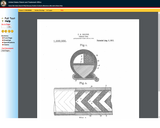
I am starting the 1920's next week and plan to use a series of images from the USPTO website showing filed patents between 1865-1930. I plan to hange these on the wall as a gallery walk activity to solicit students observations and reflections from the following questions.
How is technology changing in America?
What do the patent numbers and dates indicate about the pace of progress?
This will serve as a summary to the rapid and unrelenting industrialization and technilogical progress which occurred in the late 19th and early 20th centuries. The 1920's reflect the final frenzy of progress before the halting collapse of industrial production associated with the Great Depression. Purpose will be both a review and preview activity.

Poster showing a disabled man with a crutch standing in a doorway looking at landscape beyond, with Red Cross nurse and others in foreground. Exhibited: American Treasures of the Library of Congress, 2005.
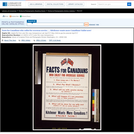
Poster explains details of enlistees' service and compensation. Title from item. No. 12.
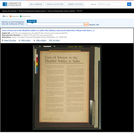
Exhibit poster showing text listing the opportunities that are provided by the Federal Board for Vocational Education and by the Bureau of War Risk Insurance which are available to disabled servicemen. Poster caption: Information regarding the opportunities described may be obtained in the larger centers from officers of the Federal Board for Vocational Education and the Bureau of War Risk Insurance and in all centers from the local Home Service Section of the American Red Cross. Exhibit of the Red Cross Institute for Crippled and Disabled Men and the Red Cross Institute for the Blind.
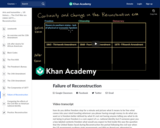
During Reconstruction, three new amendments to the Constitution redefined freedom, citizenship, and democracy in the United States. But how much really changed? In this video, Kim examines continuity and change over time in the lives of African Americans in the South before and after Reconstruction.
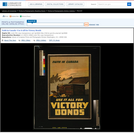
Poster showing a treasure chest, with soldiers in the background. No. W.P. 3. Title from item.
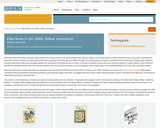
Alternative facts, fake news, and post-truth have become common terms in the contemporary news industry. Today, social media platforms allow sensational news to “go viral,” crowdsourced news from ordinary people to compete with professional reporting, and public figures in offices as high as the US presidency to bypass established media outlets when sharing news. However, dramatic reporting in daily news coverage predates the smartphone and tablet by over a century. In the late nineteenth century, the news media war between Joseph Pulitzer’s New York World and William Randolph Hearst’s New York Journal resulted in the rise of yellow journalism, as each newspaper used sensationalism and manipulated facts to increase sales and attract readers.